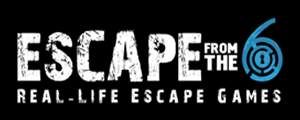Over the years, escape rooms have gained popularity as a form of entertainment and teambuilding. Escape rooms feature a variety of themes, ranging from historical settings and spy missions to fantasy worlds and horror scenarios. The goal is for the participants to solve all of the puzzles and challenges and to escape the locked room within the allotted time.
The escape room has contributed to a broader cultural fascination with puzzles, challenges, and storytelling. Escape rooms have inspired creative storytelling, incorporating the concept of solving puzzles or navigating challenges within plotlines. Here are some ways the escape room has influenced and been represented on literature and mass media:
Thriller or Horror
With the concept of a locked room, movies and literature that are inspired by escape rooms tend to be in the horror genre. When TV shows, movies, or literature portray escape rooms with thriller or horror elements, they often create an intense and suspenseful atmosphere. The physical environment of the escape room is designed to be eerie, mysterious, or even terrifying. Dark lighting, unsettling décor, and unnerving sound effects contribute to the overall atmosphere of suspense. In thriller or horror portrayals, participants in escape rooms are often faced with life-or-death consequences. The escape rooms are focused on survival themes where the characters not only need to solve puzzles but also need to navigate dangerous situations and outsmart potential threats. The puzzles may involve psychological elements that tap into the characters’ fears or vulnerabilities, including facing phobias, dealing with traumatic memories, or making morally challenging decisions. Failure to solve the puzzles within a specific time frame might result in severe punishment, injury, or even death. The combination of these elements create a gripping and suspenseful experience for viewers, blending the puzzle-solving aspect of escape rooms with the heightened stakes of thriller and horror genres.
Mystery and Intrigue
Escape rooms are often portrayed as spaces where characters must unlock secrets and hidden information. In some cases, characters may enter the escape room without a clear understanding of the objectives. The mystery lies not only in solving puzzles but also in figuring out why they are in the escape room in the first place and what they need to achieve.
In the representation of escape rooms in the mystery or thriller genres, the puzzles and challenges may reveal crucial details about the characters’ pasts or the overarching plot. The escape room challenges are seamlessly integrated into the overall narrative. They are not just standalone puzzles but are linked to a larger mystery that unfolds as characters progress through the room. Elements of characters’ backstories are revealed as they solve puzzles, revealing relationships, motivations, and hidden agendas in the storyline. The use of escape rooms in movies, TV shows, and literature adds a dynamic element to the storytelling. The challenges and puzzles become integral to unraveling the narrative, keeping audiences and readers engaged as they anticipate the resolution of the mysteries.
Comedy
Some depictions of escape rooms, particularly on TV shows, involve comedic elements. Characters with contrasting personalities or skills are often put together in teams. In some escape room-themed episodes, some characters may have been forced or peer pressured into joining the activity. The resulting comedic dynamic comes from the clashes between team members and the humorous interactions that occur during puzzle solving. Escape rooms may involve physical challenges or tasks that lead to slapstick comedy. Characters might fumble with props, accidentally trigger mechanisms, or find themselves in comical situations as they navigate the room. Some shows or movies use escape rooms as a backdrop for parody. They may exaggerate the conventions of escape rooms, turning them into comedic exaggerations of the real experience. Some portrayals may poke fun at the concept of escape rooms or the trends associated with them, humoring audiences familiar with the escape room phenomenon. By incorporating these elements, TV shows and movies can turn the typically intense and suspenseful escape room experience into a funny and light-hearted form of entertainment.
Team Dynamics
Although the representation of escape rooms can vary by genre, a common theme across portrayals of escape rooms is the importance of team dynamics among the characters involved. Movies, TV shows, and literature often highlight the importance of teamwork within the group of participants. Teams are often composed of characters with diverse skills, backgrounds, and personalities. This diversity leads to interesting interactions and challenges as team members with different strengths and weaknesses work together. With the differences in the characters’ personalities, however, come communication challenges. Characters in escape room settings may face conflicts or disagreements as part of the plot. Teams must share information, ideas, and observations to solve puzzles. Poor communication can lead to misunderstandings, delays, and potential failure to escape the room. The challenges in escape rooms often require a level of trust among members, and, in escape room portrayals, characters eventually learn to rely on each others’ strengths and work collaboratively. Some portrayals of escape rooms involve the emergence of leadership roles within the team. Certain characters may take charge, providing direction and coordination, while other contribute with their unique skills. The successful completion of challenges often leads to moments of celebration and teamwork. These moments reinforce that the collective achievement is the result of everyone’s contributions.
Overall, the portrayal of escape rooms in movies, TV shows, and literature can vary widely. Escape room themes offer a blend of entertainment, interactivity, and versatility that creators and writers find appealing for engaging audiences and crafting compelling narratives. The popularity of escape rooms in various forms of media demonstrates their effectiveness in capturing the imagination of viewers and readers.
